F.A.Q.’s and Methods
Acupuncture Treatment
What is Acupuncture?
Acupuncture is an ancient style of medicine that involves the insertion of hair-thin needles into the body that helps the body heal itself of disease. It is a safe and effective form of holistic medicine that has gained recognition by the World Health Organization and the National Institute of Health. What are the benefits of Acupuncture?
Acupuncture results in freedom from pain, disease and discomfort without the harsh side effects that are often associated with most prescription medications. It also adds a sense of relaxation from everyday stressors and induces increased vitality and energy in its patients. Other benefits of Acupuncture included a stronger immune system, proper digestion and an all over sense of balance throughout the body and mind.
Hair-thin acupuncture needles are inserted into the body along specific acupoints. These points lie on particular pathways that are connected to various organs. The ancient Chinese believed that Qi (vital air) flows through these vessels. Whenever there is a blockage or deficiency of Qi in these vessels, pain or chronic disease result. These blockages or deficiencies can be caused by many factors in our day-to-day activities such the environment, emotions, improper diet, injuries, or improper lifestyle choices.
The Western view of how acupuncture works is that when a needle is place onto a point on the body, the stimulation of the needle sends a signal through the nerves which flows to the spinal cord and to the midbrain to finally arrive at the brain. When the signals reach the brain, it in turn causes the brain to release beta-endorphins and enkephalins- the body’s natural pain-killers. Also, acupuncture not only stimulates the nervous system, it also activates the vascular system thus increasing blood flow to specific areas of the body. How many treatments will I need?
It depends on the nature and the severity of the patient’s condition. Some people feel better in one session and some people–those with chronic problems–need a little more time. The speed at which one heals is determined by the changes a patient makes in his or her lifestyle in conjunction with further treatments.
Are there any side effects from Acupuncture?
Although acupuncture is a holistic and non-invasive treatment system and with very little side effects, rare cases of the following can occur:
- Post-treatment dizziness and/or fainting
- Bruising
- Needle-stick
- Pneumothorax
- Burns from moxibustion
What will my first treatment be like?
Your initial consult will start off with an interview. The interview consists of questions regarding the condition needing treatment. The patient is also encouraged to discuss lifestyle choices such as diet, sleep, emotions, breathing, energy level throughout the day, and so on; factors known to disrupt the flow of Qi.
During the interview, we will do a physical examination of the pulse and tongue which shows all indicators of disease or physical distress. Once the interview and physical exam are complete, the Practitioner will make a diagnosis based on Eastern principles of medicine, and a treatment plan is created. Without seeing and diagnosing someone it is impossible to discuss possibilities.
Next, the patient will then undergo an initial treatment with acupuncture needles placed into specific points along the body for a period of 30 to 45 minutes for pain-related conditions.
After the initial treatment, we will reevaluate the patient and then a follow-up is scheduled. What other modalities are used in an acupuncture treatment?
In addition to standard acupuncture treatment, combinations of compatible adjunctive techniques are also incorporated to achieve the maximum amount of relief.
- Moxibustion
- Cupping
- Gua Sha
- Massage (Tui Na) and physical manipulation (Chuna)
- Electro-stimulation
- Auricular acupuncture
- Herbal Medicine
Auriculotherapy Moxibustion Gua Sha Massage/Bodywork Cupping Electric Stimulation Auriculotherapy
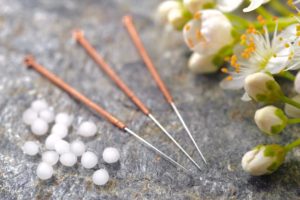 Auriculotherapy, also known as Auricular or ear Acupuncture, is a form of acupuncture that is performed entirely on the ear. Known as a microsystem, the outer ear contains about 200 acupuncture points that directly correlate to various parts of the body and as direct triggers to the brain. Auriculotherapy can be used alone as a primary mode of treatment or in conjunction with other treatments.
Moxibustion
Auriculotherapy, also known as Auricular or ear Acupuncture, is a form of acupuncture that is performed entirely on the ear. Known as a microsystem, the outer ear contains about 200 acupuncture points that directly correlate to various parts of the body and as direct triggers to the brain. Auriculotherapy can be used alone as a primary mode of treatment or in conjunction with other treatments.
Moxibustion
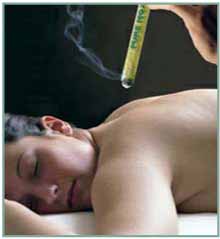 Moxibustion is a type of stimulation of acupoints using an herb called moxa (also known as mugwort). This herb, in a cone form, is placed directly onto the skin and then lit so that it burns directly onto the skin, about 2/3’s down. The heat that is emitted penetrates the acupoint to move Qi and blood throughout the meridians and muscles. Moxibustion is used in conjunction with acupuncture to treat more advanced disease or acute imbalances. According to MRI scans, when moxa is burnt onto the skin, there is an increase of white blood cells. Moxa can also be burned indirectly off of the skin. For example, a piece of moxa can be placed on top of a needle or it can be used an inch away from the skin in the form of pole moxa, which looks like a cigar.
Gua Sha
Moxibustion is a type of stimulation of acupoints using an herb called moxa (also known as mugwort). This herb, in a cone form, is placed directly onto the skin and then lit so that it burns directly onto the skin, about 2/3’s down. The heat that is emitted penetrates the acupoint to move Qi and blood throughout the meridians and muscles. Moxibustion is used in conjunction with acupuncture to treat more advanced disease or acute imbalances. According to MRI scans, when moxa is burnt onto the skin, there is an increase of white blood cells. Moxa can also be burned indirectly off of the skin. For example, a piece of moxa can be placed on top of a needle or it can be used an inch away from the skin in the form of pole moxa, which looks like a cigar.
Gua Sha
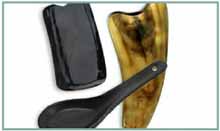 The Mandarin word “Gua Sha†literally translates as “scraping sand.†The Gua Sha technique utilizes a thin, flat board with rounded edges, a water buffalo horn or a porcelain soup-spoon that is then pushed along the surface of the epidermis. This technique draws any build-up of toxins up to the surface of the body and promotes the flow of lymph and nutrients.As the toxins are brought up to the skin, small pools of blood called petechiae, appear below its surface. If the blood has a deep purple hue, it means it is old and stagnant and indicates that ischemia is prevalent in the area. If the blood is dark-green, it is a positive sign that stagnant blood and toxins are being released. Gua Sha’s goal is to break surface capillaries so that they can rebuild themselves with a fresh supply of blood along with oxygenated, nutrient-rich fluids that regenerate and revitalize the regions where the treatment has been applied. This process can also help avert the potential growth of cancerous cells. Petechiae and bruising that arise from this treatment can last up to four to five days. Gua Sha is used best for stiffness and pain along the muscles and softens any indurations. Frozen shoulder, insomnia, asthma, allergies, menstrual disorders, and degenerative illnesses can also be treated with Gua Sha.
Massage/Bodywork
The Mandarin word “Gua Sha†literally translates as “scraping sand.†The Gua Sha technique utilizes a thin, flat board with rounded edges, a water buffalo horn or a porcelain soup-spoon that is then pushed along the surface of the epidermis. This technique draws any build-up of toxins up to the surface of the body and promotes the flow of lymph and nutrients.As the toxins are brought up to the skin, small pools of blood called petechiae, appear below its surface. If the blood has a deep purple hue, it means it is old and stagnant and indicates that ischemia is prevalent in the area. If the blood is dark-green, it is a positive sign that stagnant blood and toxins are being released. Gua Sha’s goal is to break surface capillaries so that they can rebuild themselves with a fresh supply of blood along with oxygenated, nutrient-rich fluids that regenerate and revitalize the regions where the treatment has been applied. This process can also help avert the potential growth of cancerous cells. Petechiae and bruising that arise from this treatment can last up to four to five days. Gua Sha is used best for stiffness and pain along the muscles and softens any indurations. Frozen shoulder, insomnia, asthma, allergies, menstrual disorders, and degenerative illnesses can also be treated with Gua Sha.
Massage/Bodywork
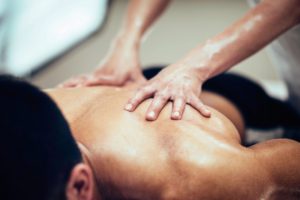 We utilize the Zheng Gu Tui Na method of massage. It combines Eastern medical principles, acupressure and an Oriental style of muscle, fascia and tissue manipulation. It is used for a wide variety of musculoskeletal conditions when used with acupuncture, external herbal liniments, or a combination of three modalities.In addition to Tui Na, we also offer Korean Chuna therapy. Unlike tui na, Chuna therapy is used realign the musculoskeletal structures as well as releasing myofascial constraints.
Cupping
We utilize the Zheng Gu Tui Na method of massage. It combines Eastern medical principles, acupressure and an Oriental style of muscle, fascia and tissue manipulation. It is used for a wide variety of musculoskeletal conditions when used with acupuncture, external herbal liniments, or a combination of three modalities.In addition to Tui Na, we also offer Korean Chuna therapy. Unlike tui na, Chuna therapy is used realign the musculoskeletal structures as well as releasing myofascial constraints.
Cupping
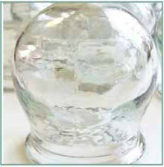 Cupping is a technique where a heat vacuum is created along the skin with the use of glass jars. This process increases blood and cell circulation through the skin and removes any stagnation around connective tissues and muscle. Cupping is applied to the upper, middle, and lower parts of the back, shoulders and legs, anywhere there is swelling and pain. It is also used in digestive conditions such as diarrhea and vomiting and is also effective to treat respiratory conditions such as the flu, asthma, chronic cough and shortness of breath.*It was also used by athletes such as Michael Phelps and Alex Naddour in the 2016 Summer Olympics.
Electric Stimulation
Cupping is a technique where a heat vacuum is created along the skin with the use of glass jars. This process increases blood and cell circulation through the skin and removes any stagnation around connective tissues and muscle. Cupping is applied to the upper, middle, and lower parts of the back, shoulders and legs, anywhere there is swelling and pain. It is also used in digestive conditions such as diarrhea and vomiting and is also effective to treat respiratory conditions such as the flu, asthma, chronic cough and shortness of breath.*It was also used by athletes such as Michael Phelps and Alex Naddour in the 2016 Summer Olympics.
Electric Stimulation
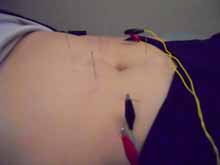 As the name suggests, electro-stimulation is a technique where acupoints are treated with a mild electrical current through the acupuncture needles. Electro-stimulation is known to be effective for the following conditions:
As the name suggests, electro-stimulation is a technique where acupoints are treated with a mild electrical current through the acupuncture needles. Electro-stimulation is known to be effective for the following conditions:
- Pain management: arthritis, bursitis, sciatica, and spasms.
- Improving muscle tone: CVA, nerve injury or other neurological deficits.
- Regulation of physiological functions: poor circulation, edema, and metabolic deficiencies.
- Increasing the production of analgesia for operative intervention.
- Treatment of addictions.
